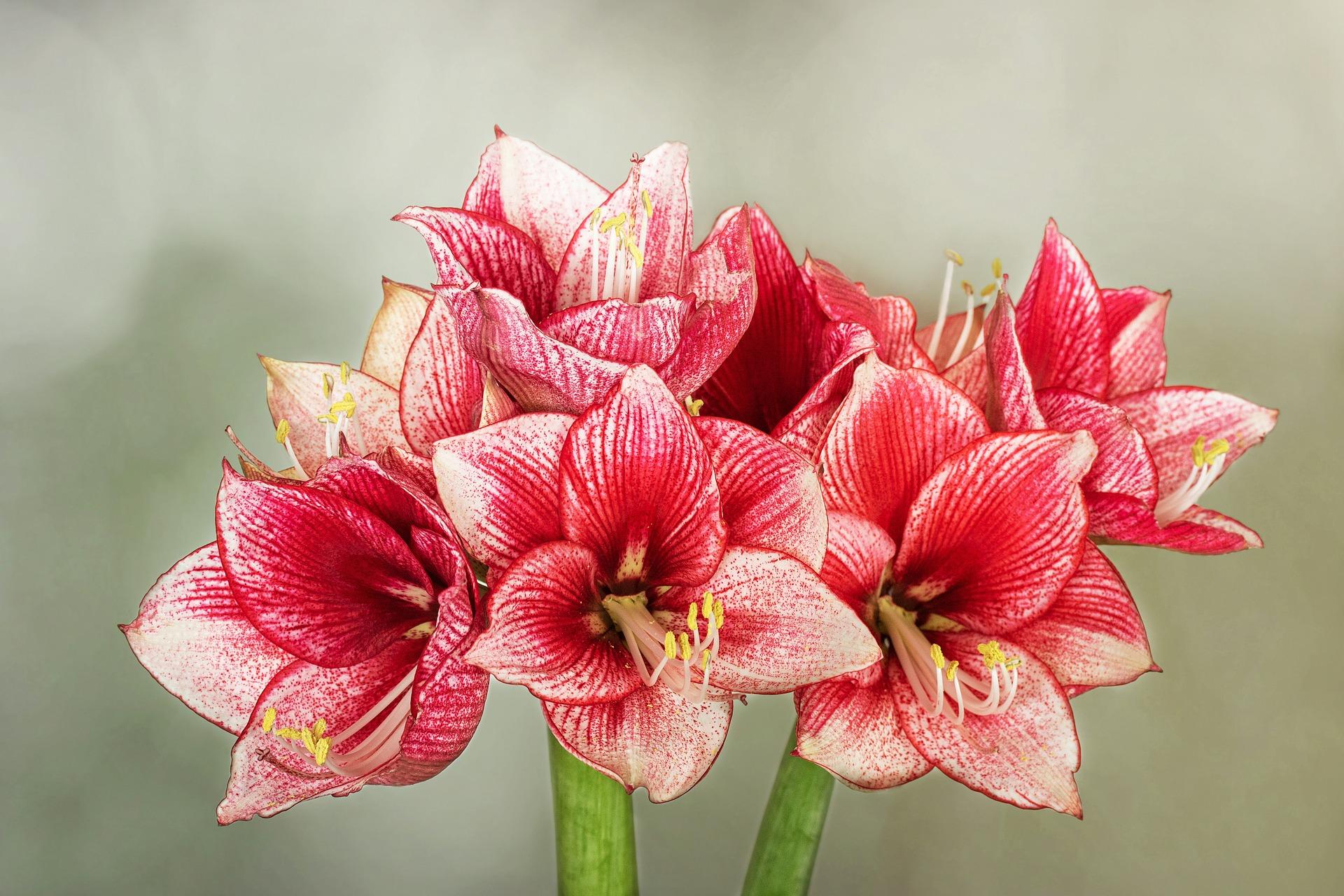About Amaryllis (Hippeastrum sp.)
This beautiful plant is an all time favorite holiday season plant that can be encouraged to bloom at other times of the year too. The bloom is a spectacular flower six inches across with two to four blossoms produced on tall sturdy stems. Each flower can last two weeks, sometimes longer. Bloom colors can range from red, yellow, pink and white. There are many hybrids bred for larger more colorful blossoms. The amaryllis commonly sold is correctly called Hippeastrum. But the plant is most often referred to by its common name which is amaryllis. Hippeastrum is native to South America. They can grow to about 24 inches tall and when properly cared for may live for several years.
Getting started with bulbs: care through flowering
-
Amaryllis (Hippeastrums) are usually sold as bulbs that have already gone through a dormancy period (a rest period) and are ready to grow. Sometimes they come in a gift box kit complete with peat moss and a pot. They can also be bought when plants are in bud or full bloom.
-
Plant bulbs in containers that drain well and are about an inch larger than the diameter of the widest part of the bulb. They bloom better when slightly potbound. Use a soilless potting mixture for houseplants and pack the potting media around the bulb.
-
Plant bulbs pointy side up and allow about 1/3rd of the bulb to be exposed above the soil.

Properly planted amaryllis bulb is starting to grow
Light
-
After planting the bulb place it in a sunny window. They need bright light (some direct light), during their active growth period. Rotate the plant slightly each time you water so that the stalk grows straight. Typical room temperatures are needed for growth.
-
Spindly floppy leaves are an indication that the light is insufficient. This will weaken the bulb and reduce or stop its ability to bloom the following year.
-
Growing in bright sunlight is the single most important factor for repeat bloom year after year.
-
To prolong flowering, blooming plants should be moved out of bright sunlight and away from heat sources (temperatures over 65 degrees F will shorten the bloom period).
Water requirements
-
After planting the bulb begin to water sparingly to keep the potting mixture barely moist. When you see about 2-3 inches of growth increase watering to keep the soil moist, but not too wet. Flower stalks usually emerge first but it is not unusual for the leaves to do so.
-
Allow the top 1/2 inch of the soil dry out between waterings.
-
When blooming water them regularly to keep the potting mixture moist. Water less after the flowers fade.
-
It is not necessary to fertilize them at this point in time.
Care of after flowering
-
Sometimes amaryllis flower stalks become top-heavy and require staking. Insert a support (be careful not to injure the bulb) and gently us a soft tie to secure the stalk to the support.
-
Cut back the flower stalks after blooms have faded but do not cut the foliage (they are needed to produce the energy the bulb needs to rebloom).
-
Plants can be moved outdoors (containers can be sunk in the ground if desired) after the danger of frost has passed. Slowly introduce them to a partial sun location. Bring them back indoors before the first frost in the fall.
-
After flowering is the time to fertilize them. Use a standard houseplant fertilizer as directed up until it is time to initiate dormancy (a period of time when a plant is not actively growing).
-
Healthy plants will have the ability to rebloom but many people discard amaryllis after they have finished blooming.
Initiating the dormancy period to begin the blooming process
-
As with any bulb (think of tulips and daffodils), there has to be a dormancy period for them to rebloom. To initiate dormancy so that your amaryllis blooms around the holidays you need to begin the process in late summer-early fall.
-
Move the plant to a cool (40-50 degrees F.), dry location such as a basement. Light is not important at this time. Withhold water and wait for the leaves to yellow and wither away.
-
Let the bulb rest for about 6-8 weeks. You should see signs of regrowth by this time and is a signal to start the growing process again.
Propagation
A healthy vigorously growing bulb will produce young bulbs around the base (where the roots originate from the bulb). These can be detached and planted (as explained above) to grow into new plants. They will require a few years to reach the minimum flowering size of 3-4 inches.
Author: Ray Bosmans, Professor Emeritus, University of Maryland Extension
Revised: Debra Ricigliano, February 2016
